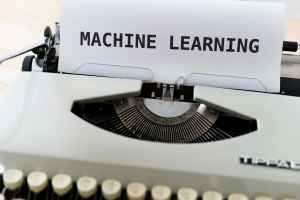Artificial Intelligence: A Double-Edged Sword in the Publishing Industry
The Evolving Landscape of AI in Literature
In recent years, artificial intelligence (AI) has made significant strides in various fields, including the literary realm. However, its integration into the publishing industry has been met with mixed reactions, sparking debates about copyright infringement, author identity, and the future of writing. This comprehensive analysis delves into the intricate relationship between AI and publishing, exploring both the challenges and opportunities it presents.
AI’s Impact on the Publishing Industry
Copyright Concerns and Lawsuits:
OpenAI, the company behind ChatGPT, has faced multiple copyright infringement lawsuits from renowned authors, alleging unauthorized use of their works to train AI models. The Author’s Guild, representing prominent authors, has accused OpenAI of violating copyright law, potentially impacting the use of AI in publishing.
Surge in AI-Generated Books:
Self-publishing platforms have witnessed a surge in AI-generated books, raising concerns about quality and authenticity. Amazon’s Kindle Direct Publishing (KDP), the largest book distributor in the U.S., has implemented a policy limiting self-published books and requiring disclosure of AI usage.
Challenges in Detecting and Regulating AI-Generated Content
Detection Difficulties:
Detecting AI-generated content, especially high-quality texts, remains a formidable challenge for publishers and self-publishing companies. Current detection tools often produce false positives, leading to inaccurate assessments.
Inadequate Tools and Resources:
Publishers and self-publishing platforms lack comprehensive tools and resources to effectively identify and regulate AI-generated content. The rapid evolution of AI technology outpaces the development of detection mechanisms.
The Rise of AI Detection Software
Emergence of Detection Companies:
Companies specializing in AI detection software have emerged, aiming to assist publishers in identifying AI-generated text. Optic, CopyLeaks, and GPTZero are among the popular detection tools available.
Accuracy Limitations:
Detection software faces limitations in accuracy, often producing false positives or failing to identify sophisticated AI-generated content.
Barnes & Nobles’ Stance on AI-Generated Books
Barnes & Nobles, a major book retailer, asserts that it does not sell AI-generated books in its stores. The company emphasizes informing customers about AI-generated content when available.
Authors’ Perspectives on AI Integration
Skepticism and Optimism:
Authors express skepticism about the effectiveness of AI detection tools, citing high false positive rates. Simultaneously, many authors acknowledge the potential benefits of AI in enhancing productivity and streamlining writing processes.
The Future of AI in Publishing: Uncertainty and Adaptation
Legal Uncertainties:
The ongoing legal battles surrounding AI’s use in publishing create uncertainty regarding its future applications. Publishers await the outcomes of these lawsuits to determine necessary policy changes.
Emergence of AI-Focused Companies:
Companies like Sudowrite and Future Fiction Academy offer AI-powered tools and training for fiction writers, aiming to harness the technology’s potential. These companies emphasize the importance of understanding AI’s capabilities and limitations to effectively incorporate it into writing.
Conclusion: Navigating the Evolving AI Landscape
The integration of AI in the publishing industry presents both challenges and opportunities. While AI detection software continues to develop, its limitations highlight the need for clear guidelines and regulations to govern the use of AI in literature. As AI evolves, authors, publishers, and readers must adapt to this rapidly changing landscape, fostering a balanced approach that respects copyright, promotes creativity, and ensures the integrity of the literary world.






